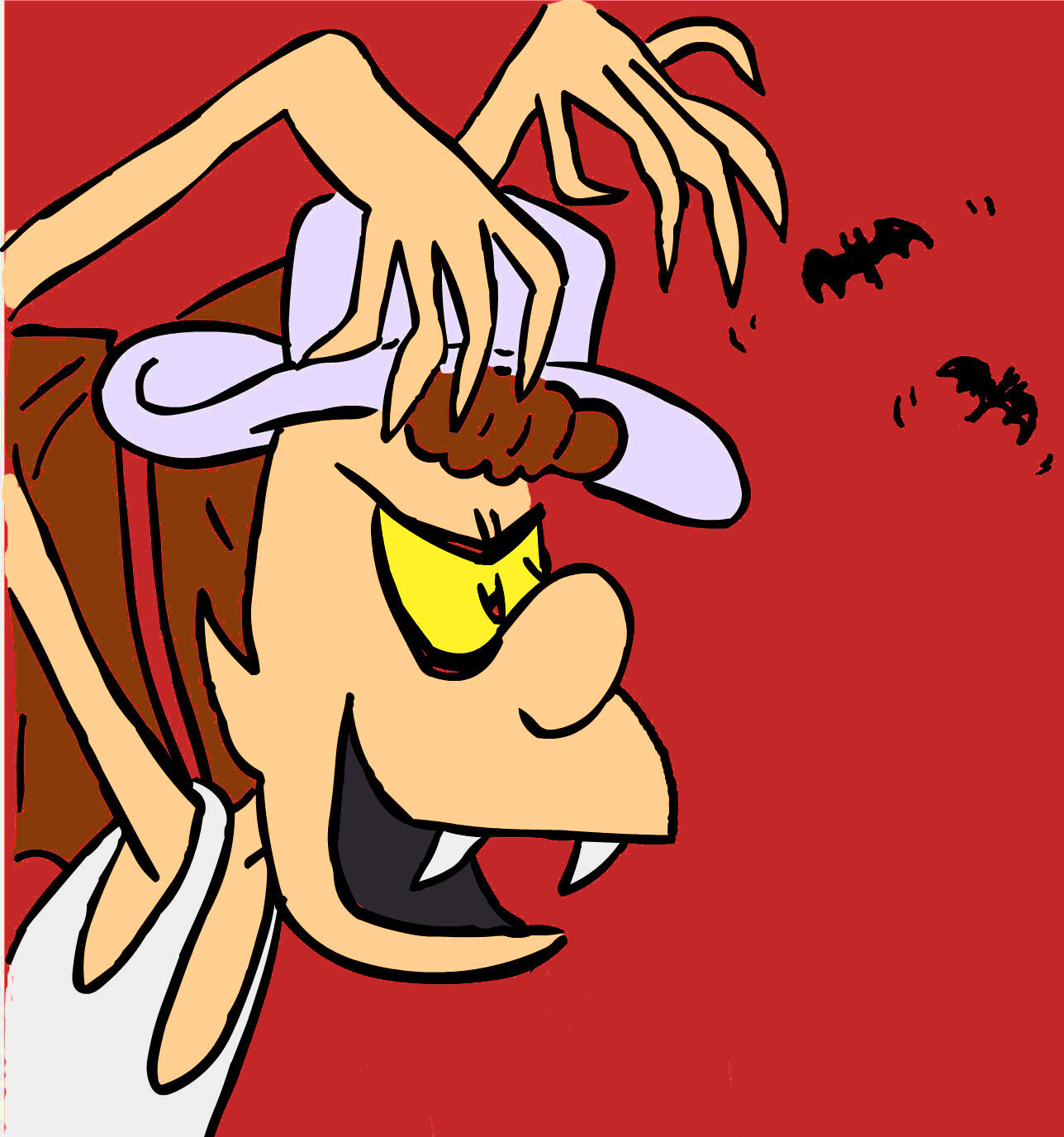Main photo by ilan Lubitz
Elysia marginata are Sacoglassons (a type of sea slug) and are found in the Indo-Pacific ocean at depths of 0-10 metres
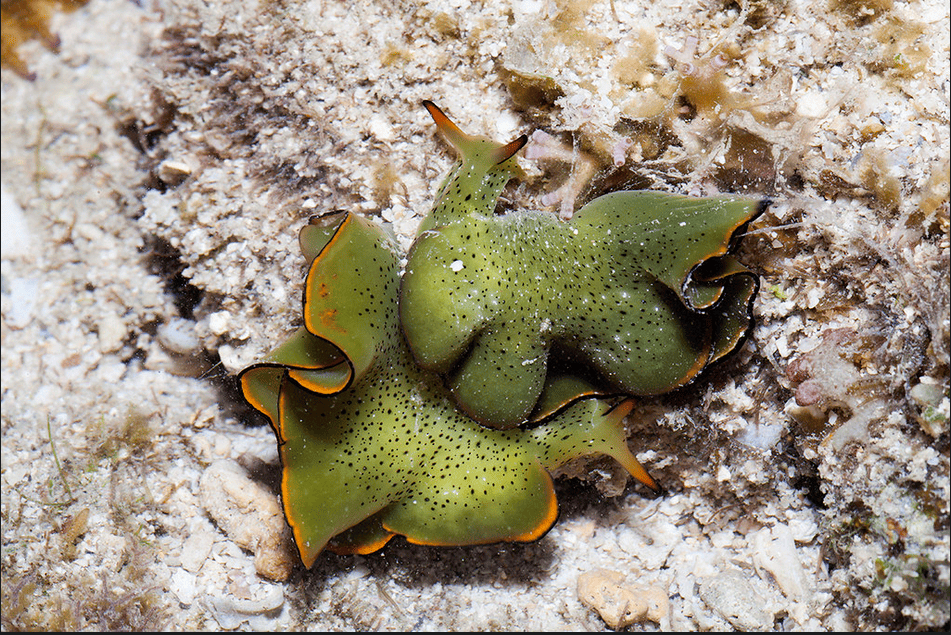
Above photo by budak
They eat algae and store the chloroplasts in its body. The chloroplasts continue to photosynthesize and provide its host with a source of food!

Above ‘Pair of leaf slugs on algae. They feed on green algae and can grow from 3 to 8cm long. Photo by Wesley Oosthuizen.’ source
They have the ability to regenerate a completely new body (including a new heart) from their head, after it detaches itself from its old body! (A process called autotomy- self amputation)
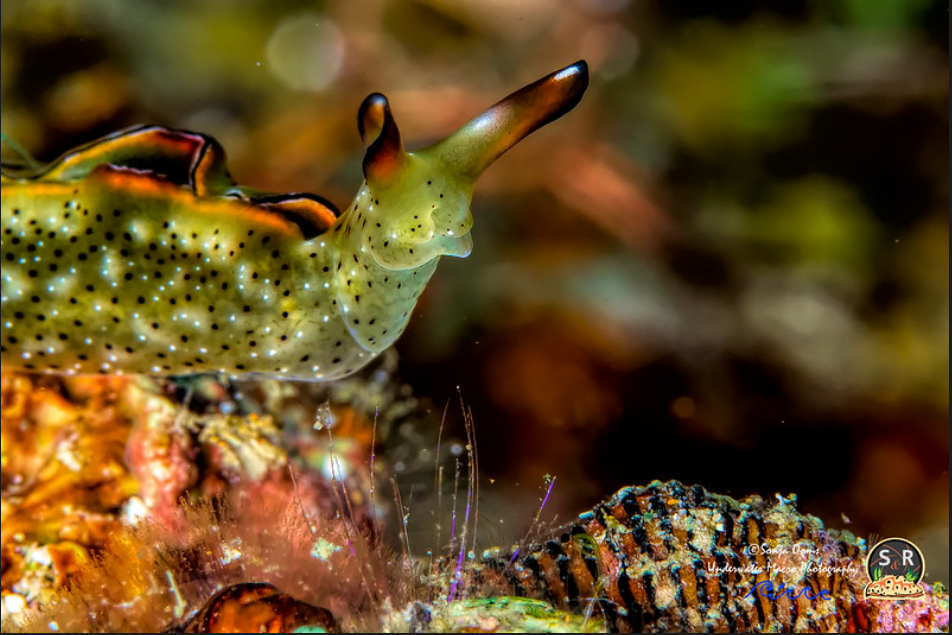
Above photo by Sonja Ooms
Their ability was discovered by Sayaka Mitoh, a doctoral student at Nara Women’s University in Japan, who spotted the decapitated head of E. marginata circling its separated body in one of the tanks in the lab
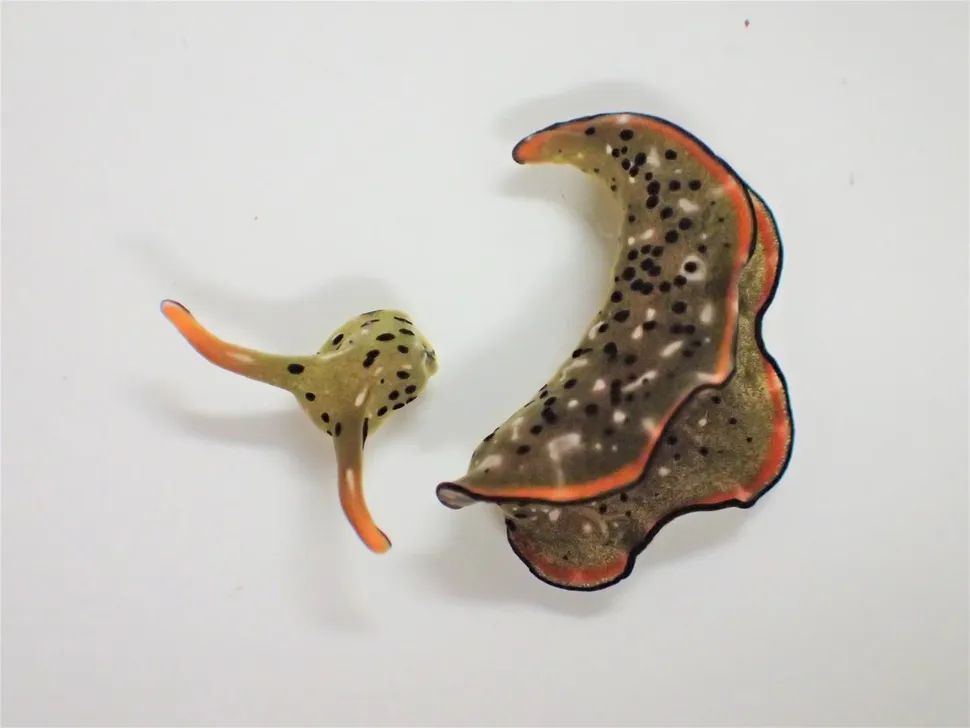
Above ‘This image shows the head and the body of Elysia cf. marginata, a day after autotomy.’ (Image credit: Sayaka Mitoh) source
Quite naturally she thought the slug would soon die, however…
“After a few days, the head started regenerating the body and I could see [the] beating of the heart. It was unbelievable,” Mitoh told Live Science. “I was really happy and relieved when I found it could regenerate the body.” source

- A, Head and body of Elysia cf. marginata, just after autotomy (day 0), with the pericardium (heart) remaining in body section (arrow)
- B, day 7
- C, day 14
- D, day 22, showing whole-body regeneration.
- E, Head and body of Elysia atroviridis (individual no. 1) just after autotomy (day 0).
Above text and photo source
The head continued to grow its new body over the next 3 weeks, including all vital organs, reaching about 80% of its original size!
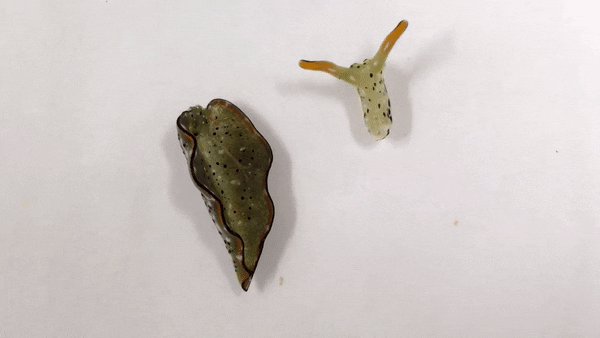
Above gif source
“The [original] body continues to move and live for days to months,” Mitoh said. “You can see the heart beating” inside them, she added. However, the decapitated bodies did not appear to be capable of growing new heads themselves. source
The old bodies remained active for several days to months, until they started to shrink, turn pale due to the chloroplast loss, and eventually died. The beating heart remained visible until the body had fully decomposed!
So, why such an extreme behaviour?
In other animals self amputation usually occurs when escaping a predator, however this may not be the case here…
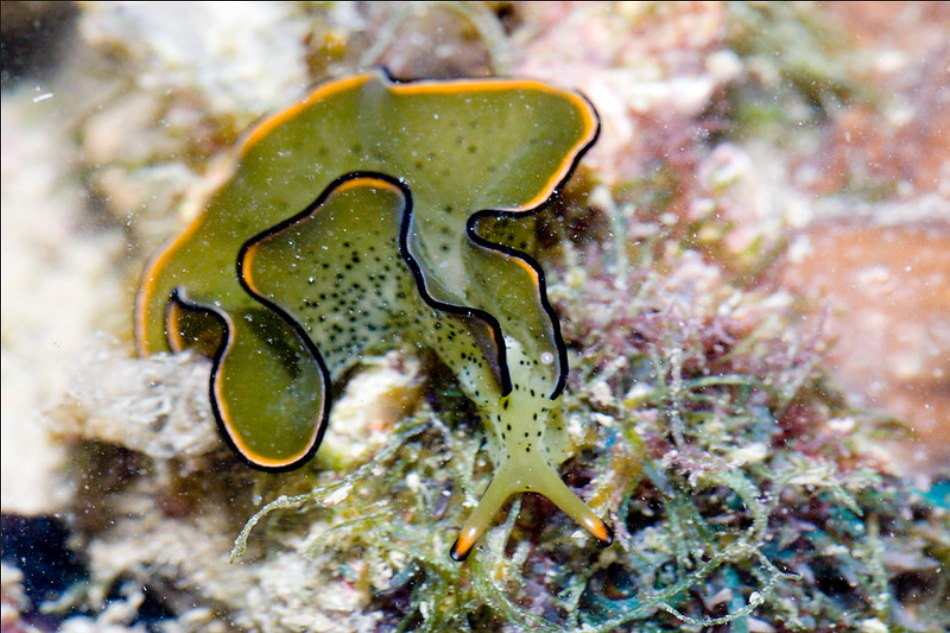
Above photo by budak
The head can take several hours to detach from the body, so not exactly a quick get away from a predator
Instead it is suspected that it is a means of ridding itself of parasites. There is a slight groove towards the end of the head which acts as a breakage plane, and the similar head severing species Elysia atroviridis all had internal parasites when they detached from their bodies…
However, no parasites were detected in Elysia marginata that did the same…
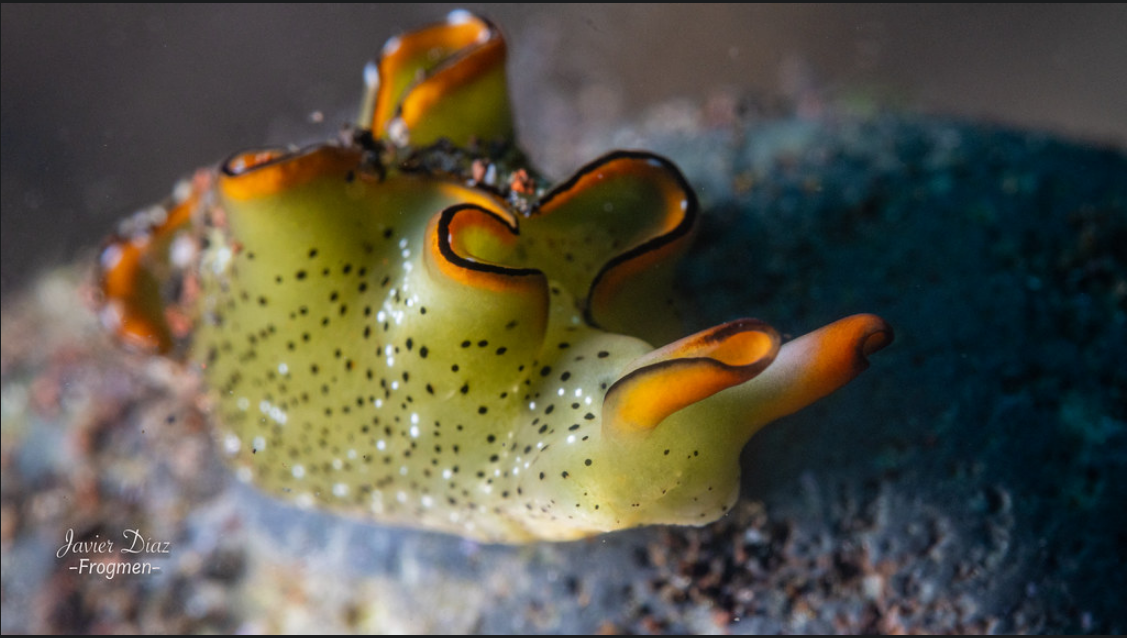
Above photo by Javier Diaz Frogmen
The ingested chloroplasts are thought to help in the regeneration of the new body and keep the head alive in the absence of the digestive system organs (which remain with the body).
One individual that was studied underwent autonomy and regeneration twice, which researches think is the limit…(which probably means it didn’t survive the third time scientists went to work with a scalpel)
Interestingly this behaviour was only exhibited by young Elysia marginata. When older animals were decapitated their heads survived up to 10 days, and didn’t regenerate before dying

Above photo by Antonio Venturelli
All information from wikipedia, here, here, here, here, here and here
As always I’m not an expert, any errors let me know in the comments and I’ll edit
And I shall leave you all with a reprise of my current favourite gif…

Self-decapitating Sacoglassons sounds like a lost chapter of Gulliver’s Travels
Dammit! That’s a much better title…why didn’t I come up with that?


